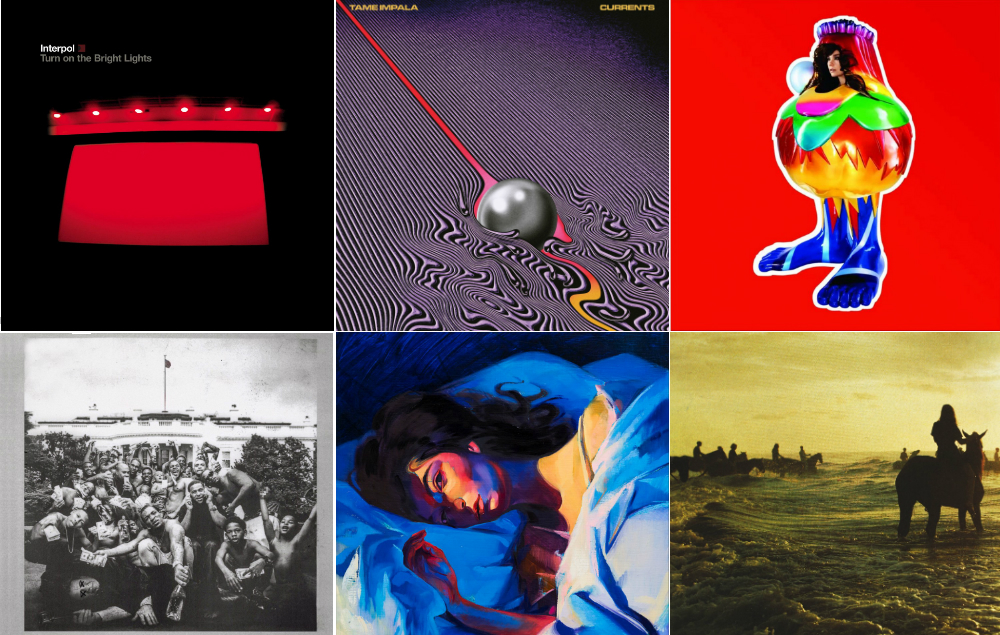Introduction
Album covers are an integral part of music history, serving as visual representations of an artist’s creative vision and capturing the essence of an album’s music and themes. From iconic imagery to innovative design, these 21 album covers have left an indelible mark on popular culture, transcending their status as mere packaging to become iconic symbols in their own right.
“The Dark Side of the Moon” by Pink Floyd
The cover of Pink Floyd’s “The Dark Side of the Moon” features a prism refracting light into a spectrum of colors against a black background. Designed by Storm Thorgerson and Aubrey Powell of the design firm Hipgnosis, the prism symbolizes the band’s exploration of themes such as greed, conflict, and mental illness.
“Abbey Road” by The Beatles
The cover of The Beatles’ “Abbey Road” album features a photograph of the band members walking across a zebra crossing outside Abbey Road Studios in London. Taken by photographer Iain Macmillan, the image has become one of the most iconic album covers in music history, symbolizing the band’s unity and creativity.
“Nevermind” by Nirvana
The cover of Nirvana’s “Nevermind” album features a baby swimming underwater towards a dollar bill on a fishhook. The image, captured by photographer Kirk Weddle, has become synonymous with the grunge movement of the 1990s and sparked controversy due to its provocative nature.
“The Velvet Underground & Nico” by The Velvet Underground
The cover of The Velvet Underground’s debut album features a banana sticker designed by artist Andy Warhol. The peelable sticker allowed listeners to “peel slowly and see” a flesh-colored banana underneath, reflecting Warhol’s fascination with consumer culture and sexual imagery.
“Sgt. Pepper’s Lonely Hearts Club Band” by The Beatles
The cover of The Beatles’ “Sgt. Pepper’s Lonely Hearts Club Band” album features a colorful collage of famous figures, including the band members themselves. Designed by artists Peter Blake and Jann Haworth, the cover reflects the band’s embrace of psychedelia and their desire to break free from their previous image.
“The Rise and Fall of Ziggy Stardust and the Spiders from Mars” by David Bowie
The cover of David Bowie’s “The Rise and Fall of Ziggy Stardust and the Spiders from Mars” album features Bowie in his iconic Ziggy Stardust persona, sporting a lightning bolt across his face. Designed by artist Terry Pastor, the cover captures Bowie’s otherworldly aesthetic and futuristic vision.
“London Calling” by The Clash
The cover of The Clash’s “London Calling” album features a photograph of bassist Paul Simonon smashing his bass guitar on stage. Taken by photographer Pennie Smith, the image captures the energy and rebellion of punk rock and has become one of the most iconic album covers of all time.
“Led Zeppelin IV” by Led Zeppelin
The cover of Led Zeppelin’s “Led Zeppelin IV” album features four symbols, each representing a band member. Designed by guitarist Jimmy Page, the symbols have been the subject of speculation and interpretation over the years, adding to the album’s mystique and allure.
“Thriller” by Michael Jackson
The cover of Michael Jackson’s “Thriller” album features a striking image of Jackson in a white suit against a black background, with his arms outstretched and a tiger cub at his feet. Designed by artist Dick Zimmerman, the cover captures the album’s blend of pop, rock, and funk and has become one of the most iconic images in music history.
“The Wall” by Pink Floyd
The cover of Pink Floyd’s “The Wall” album features a white brick wall with the band’s name and album title written on it. Designed by artist Gerald Scarfe, the cover symbolizes the barriers and isolation depicted in the album’s narrative and has become synonymous with Pink Floyd’s epic concept album.
“The Rolling Stones” by The Rolling Stones
The cover of The Rolling Stones’ self-titled debut album features the band’s iconic tongue logo designed by artist John Pasche. Inspired by Mick Jagger’s distinctive mouth and lips, the logo has become one of the most recognizable symbols in rock music.
“In the Aeroplane Over the Sea” by Neutral Milk Hotel
The cover of Neutral Milk Hotel’s “In the Aeroplane Over the Sea” album features a surreal and enigmatic image of a vintage photograph. Designed by band member Jeremy Barnes, the cover reflects the album’s themes of nostalgia, love, and loss and has become a cult favorite among indie music fans.
“The Freewheelin’ Bob Dylan” by Bob Dylan
The cover of Bob Dylan’s “The Freewheelin’ Bob Dylan” album features a black-and-white photograph of Dylan and his then-girlfriend Suze Rotolo walking down a snowy street in New York City. Taken by photographer Don Hunstein, the image captures the intimacy and spontaneity of Dylan’s folk music and has become an iconic image of the 1960s folk revival.
“Born to Run” by Bruce Springsteen
The cover of Bruce Springsteen’s “Born to Run” album features an iconic image of Springsteen leaning against saxophonist Clarence Clemons. Taken by photographer Eric Meola, the image captures the energy and passion of Springsteen’s music and has become synonymous with the American rock icon.
“American Idiot” by Green Day
The cover of Green Day’s “American Idiot” album features a heart-shaped hand grenade against a black background. Designed by artist Chris Bilheimer, the cover reflects the album’s themes of political disillusionment and youth angst and has become a symbol of rebellion for a generation of music fans.
“The White Album” by The Beatles
The cover of The Beatles’ self-titled album, commonly known as “The White Album,” features a minimalist design with only the band’s name embossed on a plain white background. The stark simplicity of the cover reflects the eclectic and experimental nature of the album’s music, which spans a wide range of genres and styles.
“Unknown Pleasures” by Joy Division
The cover of Joy Division’s “Unknown Pleasures” album features a minimalist image of radio waves depicting pulsar data. Designed by artist Peter Saville, the cover has become one of the most iconic images in post-punk music and reflects the band’s interest in science and technology.
“Aladdin Sane” by David Bowie
The cover of David Bowie’s “Aladdin Sane” album features a striking image of Bowie with a lightning bolt across his face. Designed by artist Brian Duffy, the cover captures Bowie’s transformation into his alter ego, Ziggy Stardust, and has become one of the most iconic images in rock music.
“The Marshall Mathers LP” by Eminem
The cover of Eminem’s “The Marshall Mathers LP” album features a controversial image of Eminem sitting on the porch of a dilapidated house. Designed by artist Jonathan Mannion, the cover reflects the album’s themes of personal struggle, social commentary, and artistic expression.
“OK Computer” by Radiohead
The cover of Radiohead’s “OK Computer” album features a cryptic image of a distorted highway interchange. Designed by artist Stanley Donwood, the cover reflects the album’s themes of technology, alienation, and existential dread and has become a symbol of the digital age.
Conclusion
These 21 iconic album covers represent some of the most memorable and influential images in music history, capturing the imagination of fans and artists alike. From surreal artwork to striking photography, these covers have transcended their status as mere packaging to become iconic symbols of creativity, innovation, and artistic expression.
FAQs
- What makes an album cover iconic?
- An iconic album cover is one that captures the essence of the music it represents and resonates with listeners on a visual and emotional level.
- Are these album covers ranked in any particular order?
- No, the album covers listed are not ranked in any particular order and are presented based on their individual significance and impact on popular culture.
- Are there any other iconic album covers that could have been included on the list?
- Absolutely, there are countless other iconic album covers that have left a lasting impact on music history and could have been included on the list.
- What role does album artwork play in the music industry?
- Album artwork serves as a visual representation of an artist’s creative vision and helps to establish the identity and brand of an album.
- Where can I learn more about the stories behind these iconic album covers?
- There are many books, documentaries, and online resources available that delve into the stories and significance of iconic album covers in music history.




